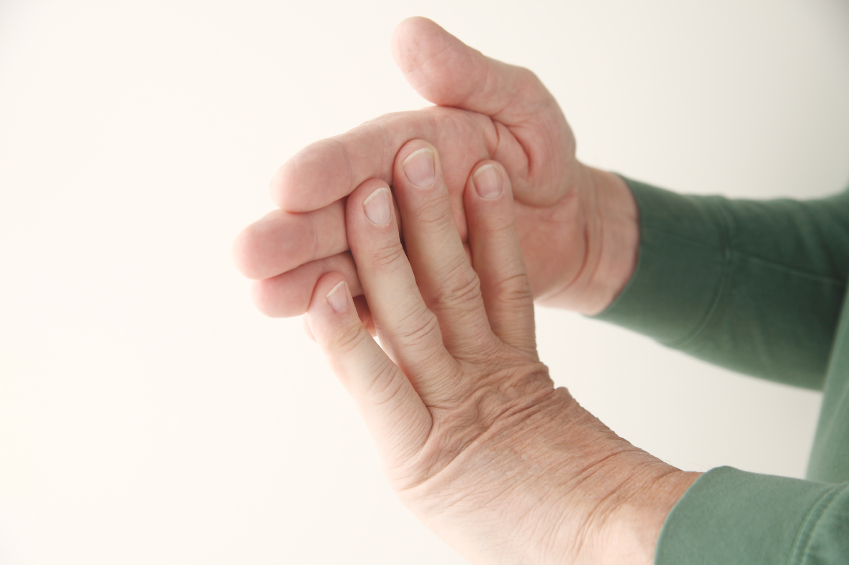Arthritis
Introduction
Osteoarthritis (OA), a disease characterized by inflammation of one or more joints, results from an interaction of multiple factors, including:
- Genetic predisposition
- Local inflammation
- Mechanical forces
- Cellular and biochemical processes
It is a degenerative disorder that results from the breakdown of articular cartilage, subchondral bone, and synovium in the affected joint.
Osteoarthritis commonly involves the weight-bearing joints, including the:
- Knees
- Hips
- Cervical and lumbosacral spine
- Sacroiliac
- Feet
- Joints of the hand
It also less commonly involves the shoulder, temporomandibular, ankle, and wrist joints. Generalized OA consists of involvement of three or more joint sites.
Diagnosis
(OA) is characterized by slowly progressive pain occurring over several years or decades. The pain is described as deep, achy joint pain worse with repetitive use often associated with reduced range of motion and crepitus.
The patient can become progressively less active, leading weight gain, increased joint, ligament and tendon stiffness.
The diagnosis of OA is not made based upon a few specific findings, but upon a constellation of clinical, physical, laboratory and imaging findings.
| Physical Exam | Radiographic Findings | |
| Crepitus Bony enlargement | Joint space narrowing | |
| Decreased range of motion | Subchondral sclerosis | |
| Malalignment | Marginal osteophytes | |
| Tenderness to palpation | Subchondral cysts |
Synovial fluid analysis
-Clear fluid
-WBC <2000/mm3
-Normal viscosity
Differential Diagnosis
- Pseudogout
- Inflammatory arthritis
- Seronegative spondyloarthropathies
- Infected joint
- Underlying mechanical pain
- Reactive arthritis
- Crystal deposition disease
- Ankylosing Spondylitis
- Avascular Necrosis
- Calcium Pyrophosphate Deposition Disease
- Neuropathic Arthropathy (Charcot Joint)
- Lyme Disease
- Patellofemoral Syndrome
- Prepatellar Bursitis
- Psoriatic Arthritis
- Rhinosporidiosis
Relieving Pain
Initially, pain can be relieved by rest and may respond to simple analgesics. However, joints may become unstable as the osteoarthritis progresses; therefore, the pain may become more prominent (even during rest) and may not respond to medications.
This class of medication includes ibuprofen and naproxen. These medications can alleviate the chronic inflammation and pain that is associated with arthritis.
Exercise
Consistent exercise is advisable, as movement helps keep the joints flexible and moving more fluidly. Walking, yoga, and water aerobics are among the best for those who suffer from this disease as these activities are low impact. Sessions with a physical therapist can help immensely, as they can help devise an exercise and stretching regimen specific to the patient’s abilities and pain level.
Speaking with a physician about accommodations that can be made specifically for the specific condition can be helpful. For example, a physician can make a recommendation to purchase special grips for objects if a patient suffers from arthritis of the hand.
Joint Injections
Many patients have seen an improvement in their pain through joint injections. These consist of a corticosteroid that is intended to reduce inflammation and pain in the joint. A treating physician may recommend a series of joint injections to improve a patient’s range of motion and quality of life.
Medial Branch Blocks
Medial branch blocks have shown success for those who are suffering from back and neck pain due to the condition. Facet joint arthritis is one of the leading causes of low back pain in adults. A medial branch block effectively reduces inflammation and irritation in the joints of the spine and often, relief from pain is immediate. Medial branch blocks may be performed multiple times at the discretion of the treating physician.
Joint Replacements
In severe cases, the only relief a patient may be offered is through full joint replacement. By replacing the damaged joint with a plastic and/or metal prosthesis, the patient may be returned to a pain free lifestyle, and may be able to resume the activities that they have had to abstain from due to arthritis pain. While knee and hip replacements are the most common, medical technology has advanced to include shoulder joint replacements, elbow joint replacements and finger joint replacements. While a replacement surgery may alleviate arthritis associated pain, recovery time post-surgery is often long and can have complications that are non-existent with less invasive options.
References
Centers for Disease Control and Prevention Website
Mayo Clinic Website

